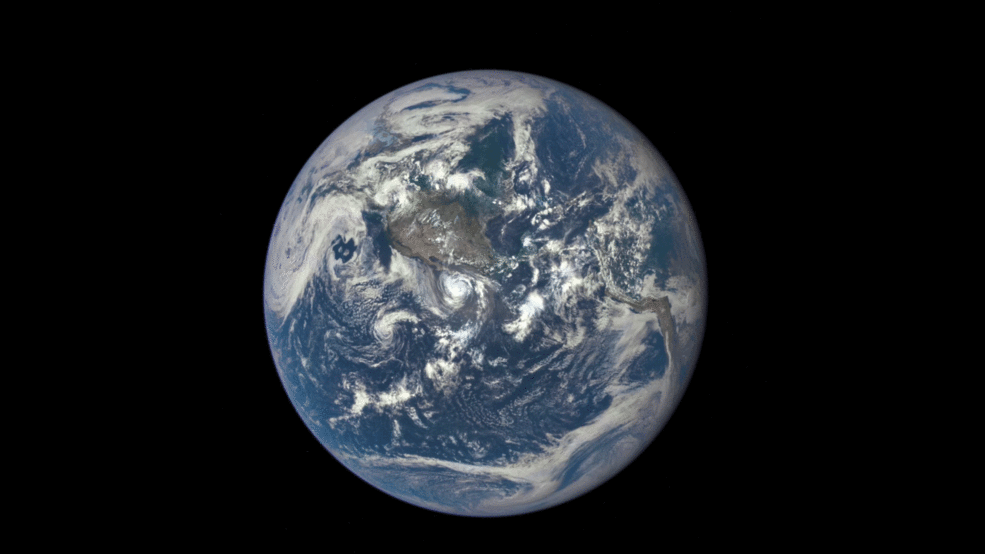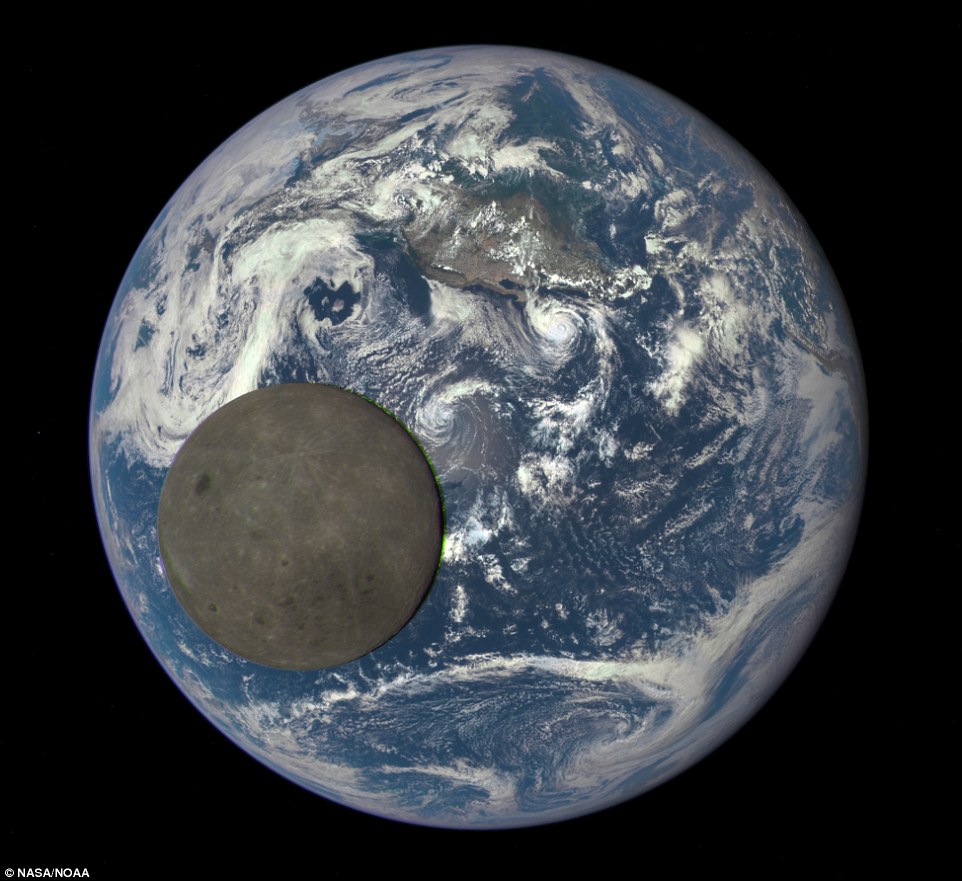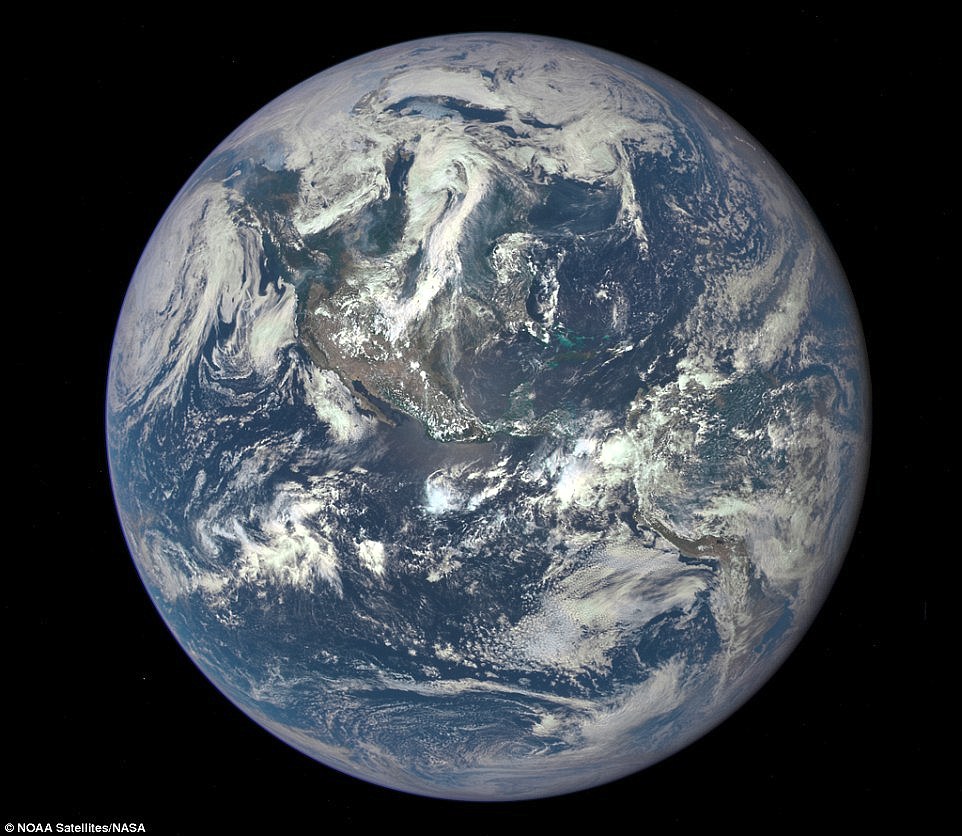
In August 2015, a remarkable image was captured by NASA’s Earth Polychromatic Imaging Camera (EPIC) aboard the Deep Space Climate Observatory (DSCOVR) satellite. It showed the moon moving in front of the sunlit side of Earth from a distance of 1 million miles.
EPIC is a four-megapixel CCD camera and telescope that constantly views the fully illuminated Earth as it rotates, providing scientific observations of various atmospheric phenomena. Once it begins regular observations, the camera will provide daily images of Earth, showcasing its daily variations over the entire globe.

Credits: NASA/NOAA
The moon and Earth are captured together twice a year as the orbit of DSCOVR crosses the orbital plane of the moon. These images were taken between 3:50 p.m. and 8:45 p.m. EDT on July 16, showing the moon moving over the Pacific Ocean near North America. The North Pole is in the upper left corner of the image, which is in the original orientation as taken by the spacecraft.
The far side of the moon is not visible from Earth and was not seen until 1959 when the Soviet Luna 3 spacecraft returned the first images. Since then, several NASA missions have imaged the lunar far side in great detail. The same side of the moon always faces an earthbound observer because the moon is tidally locked to Earth. That means its orbital period is the same as its rotation around its axis.

The EPIC’s “natural color” images of Earth are generated by combining three separate monochrome exposures taken by the camera in quick succession. EPIC takes a series of 10 images using different narrowband spectral filters, from ultraviolet to near-infrared, to produce various scientific products. The red, green, and blue channel images are used to produce color images.
Combining three images taken about 30 seconds apart as the moon moves produces a slight but noticeable camera artifact on the right side of the moon. The natural lunar movement produces a slight red and blue offset on the left side of the moon in these unaltered images.

“It is surprising how much brighter Earth is than the moon,” said Adam Szabo, DSCOVR project scientist at NASA’s Goddard Space Flight Center in Greenbelt, Maryland. “Our planet is a truly brilliant object in dark space compared to the lunar surface.”
EPIC will provide daily color images of Earth once it begins regular observations, showing different views of the planet as it rotates through the day. These images will be available on a dedicated public website 12 to 36 hours after they are acquired.

DSCOVR is a partnership between NASA, the National Oceanic and Atmospheric Administration (NOAA), and the U.S. Air Force. Its primary mission is to maintain real-time solar wind monitoring capabilities, which are critical to the accuracy and lead time of space weather alerts and forecasts from NOAA.

Leave a Reply